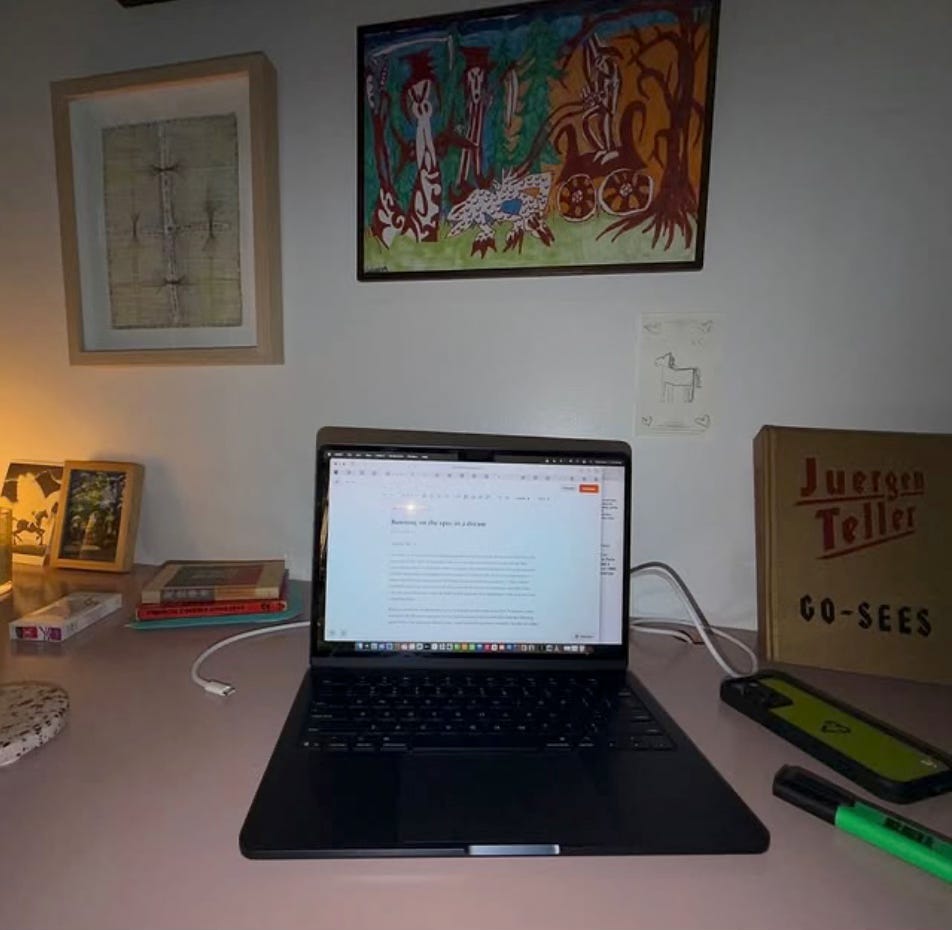The future of media revealed itself in two essays.
The next creator boom, app discovery 2.0, and AI leaves planet Earth.
This week, two women I admire joined Substack: Charli XCX and Fei-Fei Li.
They operate in completely different categories.
Charli’s the pop genius behind the brat album that defined summer 2024, with a “one color, one word, one feeling” marketing playbook so effective the industry has been stuck in its shadow ever since.
Fei-Fei built ImageNet (the dataset that enabled modern AI) and now runs World Labs, teaching spatial intelligence to machines so they can understand 3D reality the way humans do. I named her as one of the top 5 people to watch from TIME’s 100 Most Influential in AI back in August, specifically because she’s building the ChatGPT for physical reality.
Charli wrote about creative depletion… how after brat consumed 2 and a half years of her life, she felt barren until Emerald Fennell offered her Wuthering Heights, which became a lifeline. A way to escape one world into another, by making music from someone else’s perspective.
Fei-Fei wrote about why AI without spatial understanding is fundamentally incomplete: “eloquent but inexperienced, knowledgeable but ungrounded.”
Both essays are long. Both are intimate. Both assume you’ll spend 15+ minutes inside their heads vs. the 15 seconds of attention that Instagram and TikTok offer. Both women are at the peak of their power. Both could command millions of eyeballs instantly on these other platforms… if they wanted to.
But they chose Substack.
We’re in the early innings of the intimacy economy.
AI-generated content continues to flood the feeds. Audience preferences are evolving from surface to substance. The infrastructure enabling this shift is being scaled right now.
Let’s get into what moved this week across AI, money, and the future of work.
The creator economy gets a zero-commission operating system
Newsletter platform beehiiv launched a sweeping 10-product expansion on November 13, positioning itself as the “operating system for the creator economy” with AI website building, podcast hosting, digital product sales, and paid subscriptions… all with $0 commissions on creator revenue. beehiiv already services 55,000+ creators and CEO Tyler Denk explicitly frames this product expansion as competing with WordPress, Patreon, Substack, Shopify, and Gumroad simultaneously.
I like it.
For the creators who are tired of paying 5-12% to Patreon, 10% to Substack, plus Shopify fees while managing fragmented analytics, beehiiv offers them ownership plus consolidation.
A paid subscriber recently asked me for my thoughts on email service providers like Kit vs. Substack and my answer is simply to point everyone in the direction of Substack, Stan, and beehiiv.
I’ve written about Stan [here] and Substack [here] and [here].
For the past decade, media platforms have extracted rent from creators. Now platforms are competing by subsidizing creators through zero-take-rate models funded by premium features and advertising tools.
Commission compression incoming.
I expect to see defensive price adjustments from Patreon and Substack in the first half of 2026.
Meta’s $50B Reels business is great for… Meta
Meta launched Reels in 2020 as a TikTok clone. This year, Reels is on track to generate ~$50B/year in ad revenue, according to Mark Zuckerberg, making it one of the largest creator-economy “businesses” on earth.
However, creators see very little of that money.
Most of the economics accrue to Meta’s ad machine, which monetizes short-form content it mostly gets for free.
Compare that to YouTube, which built a $50B business while sharing 55% of ad revenue with creators.
Meta’s $50B Reels business only works as long as creators keep feeding it free content.
I built a 55k audience from Instagram then stopped posting in April when I launched Rich Future on Substack. My story is similar to thousands of other creators who are now prioritizing YouTube, Substack, beehiiv. Once enough creators realize they can capture more value elsewhere, the supply side of that equation breaks.
We’re seeing it happen in real time.
Charli XCX and Fei-Fei Li could’ve posted their essays on Instagram… but they didn’t.
Apple just cracked app distribution with Mini Apps
This week, Apple casually launched the Mini Apps Partner Program, and for anyone building apps, this is an opportunity to skip the hardest part of the growth curve. 0 → 1.
One of the biggest challenges for app builders is convincing users to care enough to download their standalone app. Apple’s new program enables you to avoid some friction and instead, build lightweight mini-apps that run inside existing high-traffic apps.
Project management apps can drop in time trackers. Music apps can host collaboration tools. Dating apps can drop in conversation starters.
Rather than compete for home screen real estate with the Asanas and Spotifys and Bumbles of the world, you can rent space inside apps people already use daily.
Apple’s incentivizing this with an 85% revenue share (vs. the standard 70%), which is their way of saying “we see a platform shift coming and want to own the rails.”
If you’re building micro-SaaS or vertical tools, stop thinking “how do I get downloads” and start thinking “which existing app has my target users?” Partner with host apps as a distribution channel.
If you own a high-traffic app, you just became a platform—host mini-apps, take 10-15%, and monetize your existing audience without building new features.
Space: the next frontier for AI computing
Google plans to launch AI data centers into space by early 2027. The project is called Suncatcher and envisions solar-powered satellites orbiting 400 miles above Earth, equipped with processors that meet rising AI demand without draining land and water resources. By the mid-2030s, the running costs for these space-based data centers could match Earth-based ones as rocket launch prices decrease over time.
Elon Musk’s Starlink and SpaceX are scaling up similar plans. Nvidia chips launch into orbit later this month via startup Starcloud. The infrastructure is being built right now.
What I’m thinking about: jobs.
Many people are still worried about AI replacing human work, but building compute infrastructure in space creates entirely new categories of labor. Space logistics coordinators. Orbital systems engineers. Satellite maintenance technicians. Rocket pilots scaling up launch frequency. Ground station operators managing optical data links beaming results back to Earth.
These new roles are already being posted to job boards as companies prepare to orbit.
Pretty fascinating to consider the next wave of “tech jobs” call for people who can build, maintain, and operate infrastructure that doesn’t touch the ground.
Upgrade your Rich Future subscription to get Deep Dive analyses + Founder Playbooks on building modern wealth.
Most readers expense this through their business / education budget.
We wrap with a few quick signals on my radar that indicate where capital and culture are headed...
OpenAI’s CFO admitted ChatGPT’s time-spent on app has decelerated, though they’re expecting it to pick back up. Are they trying to solve problems for people or get them addicted like Meta?
Cursor raises $2.3B at a $29.3B valuation after hitting $1B ARR with 300 employees. That’s $3.3M revenue per employee.
BNY Mellon launches the first money market fund designed to hold stablecoin reserves under the GENIUS Act. I wrote a Deep Dive on stablecoin adoption and where the future of money is headed:
Blue Origin sticks the rocket booster landing, disrupting SpaceX’s monopoly on reusable rockets. I like to see some friendly competition in the launch market, it means cheaper access to space for everyone.
Partner with Rich Future
I’m always looking to spotlight new companies, founders, or tools that are driving the future forward.
For brand partnerships, email us at hello@richfuturemedia.com








